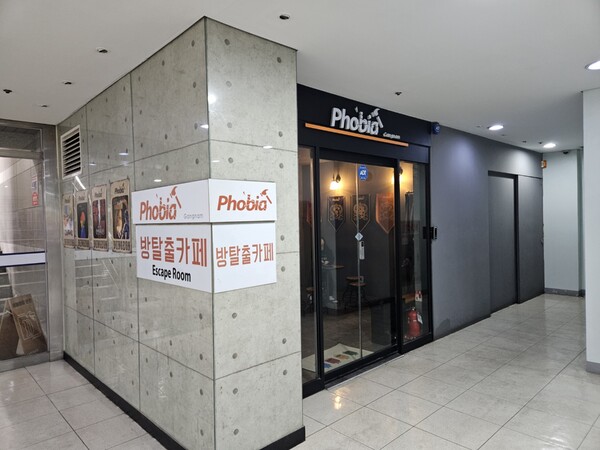
The cafe has evolved from a place selling coffee, drinks, and cakes to a popular social hub where people gather to enjoy coffee and other drinks. Countless cafes are scattered throughout Seoul. As the demand for experiences beyond just drinking coffee grows, unique and unusual cafes have begun to emerge. Korea boasts a wide variety of distinctive cafes with unique concepts. Many people, especially university students, are familiar with “study cafes” and “boardgame cafes.” A Study cafe is designed to provide an environment conducive to studying, reflecting Korea's strong education culture. On the other hand, a boardgame cafe offers a variety of boardgames that people can enjoy with friends or colleagues, reflecting the importance of communication and social interaction in Korean society. However, the variety of unique cafes does not end there. The Dongguk Post would like to introduce several unique cafes found in Korea, offering a glimpse into the lives and culture of Koreans through each of these distinctive establishments.
A pawsitive experience, Animal cafe
Animal cafes, where people can interact with animals like dogs, cats, and even rarer species such as raccoons and meerkats, have consistently been popular, especially among those unable to keep pets at home. These cafes are easy to find in busy areas, offering visitors a chance to connect with animals for comfort and companionship. There is some debate about its origin, but the most widely accepted theory is that animal cafes began in Taiwan in 1998 with the opening of the first cat cafe. This trend quickly spread in the country, and to Japan and later Korea, where wild animal cafes gained popularity.
Animal cafes, targeting consumers who are unable to keep pets at home due to living conditions or the changes in modern society. These cafes allow people to bond with animals, and their popularity is especially high in Korea, where close relationships with animals are an important part of the culture. As a result, animal cafes have become spaces where people find emotional comfort and relieve stress.
However, there has been a recent change in the regulations. As the perspective that confining animals to limited spaces is animal cruelty has become more prevalent, and due to concerns over the risk of infectious diseases, amendments to the Zoo and Aquarium Act and the Wildlife Protection Act were passed, prohibiting the operation of wild animal cafes. While existing wild animal cafes were given a grace period to report their operations, no new wild animal cafes will be allowed. Dog and cat cafes are still allowed to operate and will not be affected by these changes. The cafes are also planning to operate as shelters for stray dogs and cats.
Rest in comfort, Nap cafe
Nap cafes have emerged as a refuge for those tired of Korea’s fast-paced society. Located in bustling areas like Gangnam and Hongdae, these cafes cater to office workers, tourists, and people looking to recover from a late night. They have also been introduced recently to help foreign tourists with jet lag. At these cafes, visitors can relax in massage chairs or recliners that simulate a weightless environment, providing a short but essential break for people with hectic schedules.
For office workers, nap cafes have become a vital place of rest amidst stress and sleep deprivation. Many workers try to take a quick nap during their lunch break, leading to crowded sleep cafes, especially between 11:30 A.M. and 2 P.M. on weekdays. While the cost ranges from 6,000 to 13,000 KRW, many are willing to pay because they can briefly recharge their bodies and minds. With long working hours and chronic sleep deprivation, office workers often experience both physical and psychological exhaustion. The lunch break is typically the only time workers can leave the office, offering a brief opportunity to rest. At nap cafes, they can take a nap on beds, hammocks, or massage chairs, helping them recover quickly. Much like the concept of “querencia,” a Spanish term referring to a personal space of rest, nap cafes offer a sanctuary where office workers can rest and recharge free from external pressure. These cafes serve as peaceful spaces, allowing workers to take a break in comfort.
Challenge something new, Activity cafe
The last type of unique cafe is the cafe where people can enjoy various activities. These cafes feature themes such as fishing, archery, escape rooms, horseback riding, shooting, VR, and surfing experiences, among others. Escape room cafes, in particular, have become hugely popular among the younger generation. In addition, surfing cafes, for example, create an environment similar to actual surfing, allowing visitors to experience surfing in an indoor setting. This trend aligns well with the Koreans’ tendency to continually seek new challenges. While cafes like surfing or horseback riding may require some travel time due to their location in the suburbs of Seoul, they provide an easy way for people to try new experiences. Korea has a high demand for recreational activities, and these cafes offer people an opportunity to experience something different, while also helping them discover new hobbies. This leads to social and cultural exchanges within groups and helps relieve stress through engaging activities.
The unique cafes in Korea are all part of a culture that reflects the diverse needs of the people. New forms of cafes are constantly emerging to meet the changing trends and social stress. Furthermore, as trends and culture evolve, the existing cafes above will also change or disappear. Still, experiencing these unique cafes will greatly help in understanding the emotions of Koreans. It is recommended to make reservations before visiting popular cafes. Exploring these unique cafes allows you to experience different facets of Korean culture.
- [468 Interview] Bridging Legacy, Tradition, and Innovation
- [468 Social] The Unresolved Legacy of Pro-Japanese Collaborators in Modern Korea Society
- [468 Round-up] Annual Hiking Competition and April 19 Revolution Memorial Set for Dongguk University
- [468 Clip] Dongguk University Upgrades Campus Facilities

